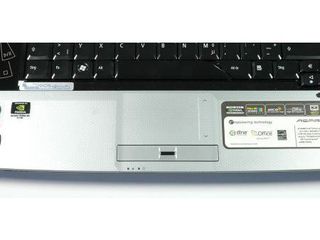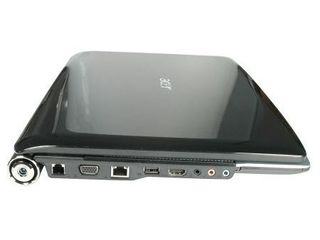What to Buy, a Notebook or Desktop PC?
Feature Comparison
If you compare a notebook to a desktop computer, advantages and disadvantages become apparent right away. In terms of size, the notebook is the clear winner: the keyboard and display are integrated in the device itself, and even the smallest of apartments has enough room for a notebook. In addition, notebooks often have a more aesthetically-pleasing appearance than desktop or tower units, and in a visual sense, fit better in the home. The integrated battery also means you are not tied down to any one location: depending on the battery’s capacity and the notebook’s power consumption level, you can work for a certain period of time far away from a power outlet.


Another plus for notebooks is their equipment. Manufacturers are increasingly including hardware in notebooks which, in the case of desktop computers, often requires additional purchases. WLAN functionality has become a standard for most notebooks, and a webcam integrated into the display is becoming more and more common. Fingerprint sensors designed to prevent access by a third party are also quite sensible, given that notebooks have a much higher risk of theft—in contrast, the use of fingerprint sensors on a desktop computer in a private setting may be an exotic rarity. Integrated multi-format card readers are increasingly common on both desktop computers as well as notebooks.

With regard to mobility and portability, notebooks also clearly have the edge. Modern units weigh between 3.5 and 9 lbs, and thanks to integrated WLAN capability and public access points, Internet access is a cinch these days. In contrast, even empty desktop cases can exceed the weight of a whole notebook. Counting the monitor, a fully functional desktop computer can easily weigh three or four times as much as an average notebook.


Even if it seems like it up to this point, a desktop computer doesn’t have only disadvantages. While a notebook has clear benefits in terms of weight, mobility, and equipment, desktop computers are superior when it comes to the ability to upgrade. The housing of a desktop CPU can usually be opened quite easily, allowing direct access to its individual components. Installing multiple hard drives or optical drives is no problem. Even replacing defective parts or upgrading hardware is much more easily achieved with a desktop computer than with a notebook.
Due to space constraints, very few notebook models support the use of multiple internal hard drives. Replacing components like graphic cards or processors in a notebook is also only possible in certain circumstances, and even then only by users with considerable technical skill. Even removing the keyboard or the display could easily result in broken parts.
Stay On the Cutting Edge: Get the Tom's Hardware Newsletter
Get Tom's Hardware's best news and in-depth reviews, straight to your inbox.
Current page: Feature Comparison
Prev Page Portable Multimedia Machines or Desktops? Next Page Hardware Module Comparison-
Oakley707 How does Tom's computer for 1850$ actually cost 1850$? Seems much lower than that... a 8800 gts (320 meg...?) seems weird!Reply -
spearhead with the desktop you could get an even better card then 8800gts 320mb for the cash. 8800gt or 3870x2 and such could give you an advatage for 1850 i could build a far better system and that is true. if not for the graphics notebooks these days are great. they only need to get some upgradebility of the mxm module for us costumers for acceptable pricings then we can more to more mobile solutions. we just want more gaming power for lower prices :)Reply
we shall soon see faster mobile solutions. the hybrid graphic solutions of the puma platform might offer good preformance for low pricing. -
njalterio Overall good article except...Reply
1)There was no mention of overclocking.
2)The Tom's guide computer was poorly built for the price. I could easily have included a 3870 X2 and two more GB of RAM. No mention of what case was used....although that probably would not have significantly impact the benchmarks.
3)Is there some kind of behind the scenes advertising here? Whats with the Samsung/Nvidia only usage? (Intel I can understand for obvious reasons)
With two more GB of RAM, the 3870X2 (which I am certain would stay within the price range), and a good overclock the desktop computer would have wrecked that laptop in benchmarks!
Would have been interesting to see a MacBook tested against these computers as well. -
coldmast 8800gts 320mb? ~$120Reply
ROTFLMFAO
give us a cost breakdown on each part of the system spec (desktop)
are you including the display cost for the desktop (22"ers are at a great price point $200-$350)
keyboard, mouse? $40-$120
Desktop and NetBook -
Shadow703793 spearheadwith the desktop you could get an even better card then 8800gts 320mb for the cash. 8800gt or 3870x2 and such could give you an advatage for 1850 i could build a far better system and that is true. if not for the graphics notebooks these days are great. they only need to get some upgradebility of the mxm module for us costumers for acceptable pricings then we can more to more mobile solutions. we just want more gaming power for lower prices we shall soon see faster mobile solutions. the hybrid graphic solutions of the puma platform might offer good preformance for low pricing.njalterioOverall good article except...1)There was no mention of overclocking. 2)The Tom's guide computer was poorly built for the price. I could easily have included a 3870 X2 and two more GB of RAM. No mention of what case was used....although that probably would not have significantly impact the benchmarks.3)Is there some kind of behind the scenes advertising here? Whats with the Samsung/Nvidia only usage? (Intel I can understand for obvious reasons)With two more GB of RAM, the 3870X2 (which I am certain would stay within the price range), and a good overclock the desktop computer would have wrecked that laptop in benchmarks!Would have been interesting to see a MacBook tested against these computers as well.Agreed.Reply
-
coldmast these article are always good but some lack proper depth,Reply
it would be nice to do a series of articles addressing different aspects.
Cheap Notebooks vs Cheap Desktops
Desktop Replacements {17"+ screen size} vs Workstations (CAD related)
Designer Notebooks (Stylish & Elegant) vs Designer Desktops / media centers (Stylish & Elegant)
and most importantly
GAMING Notebooks vs GAMING Desktops @~$1500 ~$2200 ~$3000 -
garydale I've been listening to talk about how notebook computers are catching up to desktop performance for decades now and it still hasn't happened. At any given price point, you can always get greater performance from a desktop system. That's not likely to change.Reply
However, several issues that weren't raised that should be. When a notebook breaks down, it's often cheaper to get a new notebook if its out of warranty. With a desktop system, just swap out the failed part and continue on.
I've seen lots of notebook failures too. They just don't seem to be as reliable as desktop systems. Even rescuing the data following a notebook failure is a real pain. The HD interface keeps changing and doing a disk-to-disk copy from one notebook drive to another is impossible - notebooks can't handle two hard drives at once. This means booting from a Linux live cd with the drive you want to copy in a working notebook, then copying the files to an external (usb) drive or a network share.
Students seem to think notebooks are great - very portable. Yes, and that makes them easy to steal too. If you know a student who wants a computer, do them a favour and get them something big and heavy.
And how about ergonomics? The miniature keyboard with the screen positioned too low relative to your eye level is asking for problems. Then there is the built-in pointing device. Sorry, but there's a reason why they're not used on desktop system - a mouse simply works better.
With USB keys going dirt cheap these days, get two or more desktop systems and keep one every place you normally do work. Use a USB key to transfer documents, or share them on the Internet. Of if you want to be able to move a system around, there are some very small desktop systems you can get.
I'm not saying that notebooks don't have their uses. However, a replacement for a desktop system isn't one of them. -
onearmedscissorb It's not hard at all to find a decent selection of very similar laptops with 8600M GT/9500M GS graphics, but with T9300 processors, for $1,300 to $1,400.Reply
So the laptop price isn't making sense to me, either, but I guess that evens it out some.
If they're going to allow a budget of pretty much $2,000 and basically directly compare laptops to desktops, what they should have done is used a laptop based on desktop components, as that's what the decent ones tend to start at. -
dmacfour With $1850 you could get a laptop with a much better video card. $1300 will get you one with an 8800m GTS.Reply
